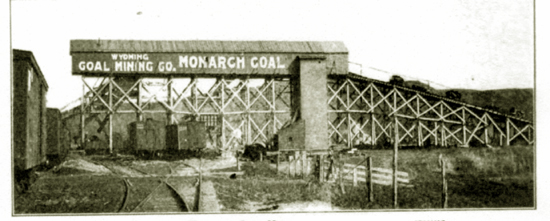
Wyoming Coal Co. Tipple, Monarch, Wyoming, 1907
Monarch, about 10 miles north of Sheridan, was founded in 1903 when
the Chicago, Burlington and Qunicy reached the area. The Wyoming Coal Co. was originally owned by J. A. Kenrick, L. H. Brooks, and
William C. Ervine.
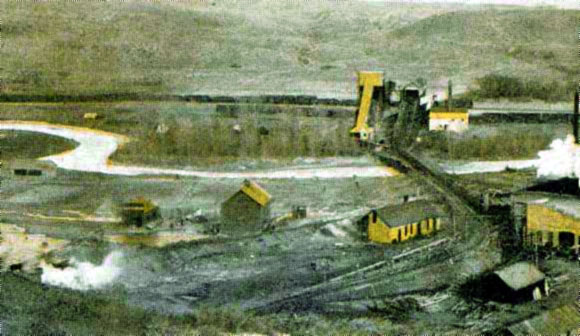
Monarch, Wyoming, 1909
About 1903, the claim was acqured by Edward M. "Bud" Holbrook of Chicago who organized the Wyoming Coal Mining Co.
The claims were rapidly expanded through the use
of middlemen by an associate Robert McPhilamey and Sheridan lawyer Ellsworth E. Lonabaugh. Specifically, "entrymen" wwere
paid to file for homestead. At the center of the scheme was Lonabaugh using money provided by Holbrook.
The claims were proved up by presenting to the Land Office in
Buffalo false affidavits. In one instance, an entryman later testified that she had
been on the property for slightly less than the required five years. She had, she testified, been on the
property only six days. Other entryman later testified that they did not even know were the claimed land
was situated. See United States v. Lonabaugh, 158 Fed 314 (1907)
In 1903, prefabricated houses were brought in from Washinton State and a company store was opened.
By 1907, the three were millionaires.
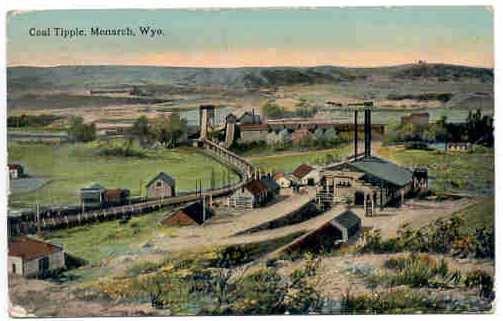
Monarch Tipple.
On May 12, 1907, a United States Grand Jury indicted the three along with E. T. McCarthy for defrauding the
United States. McCarthy was granted a separate trial and testified against his three co-conspirators.
On July 13, 1907, the three were found guilty on two counts each of conspiracy to defaud the
goverment. They faced possibly as much as two years in
prison. While on bond, the three appealed to the 8th Circuit Court Appeals, contending that
even if the affidavits had been falsified, the three-year statute of limitations had run; that the
crime was completed in 1903 when the federal land patents were issued.
Three years later, the Court of Appeals reversed the convictions. See Lonabaugh v. United
States, 179 Fed 476 (8th Cir. 1910). the court held that not withstanding clear evidence of the fraud,
the object of the conspiracy was accomplished when the government land patents were issued. Therefore,
the statute of limitations had run.
Following, the reversal of the conviction, Holbrook took a trip around the world. Upon his return,
he announced himself as glad o be back in Monarch. On November 7, 1910, Holbrook was dead as a result of, in the words of
the Sheridan Enterprise, a "slight" operation on his throat.
His widow inherited the mining company. In 1913, Mrs. Holbrook married a New York banker. In 1920, the
Sheridan-Wyoming Coal Company acquired the the Sheridan Coal Company, th Acme Coal Company, the Carney Coal Company, the
properties in Monarch, the Looi Coal Company and the Acme Amalgamated Development Company.
At its peak Monarch had a
population of approximately 800 and was connected to Sheridan by a street railway. Sheridan-Wyoming
controlled some 14,000 acres of coal lands and had an additional 2,700 acres under
lease. It had a reserve of an estimated 650,000,000 tons of coal and mined some 5,000,000 tons a year. In its
company towns it owed some 876 "cottages" as well as hotels and store buildings.
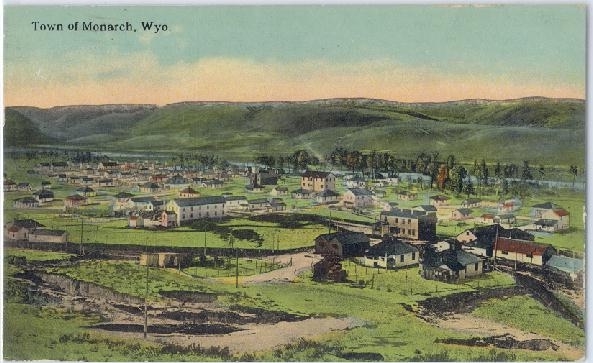
Monarch, Wyo., 1914
Beginning in the 1920's, coal mining in the Sheridan area began to decline.
By the 1930's, most coal mined in the area was for local use. In 1940 a gas pipeline reached
Sheridan and most of the remaining mines closed. Monarch
was abandoned about 1953 and today consists of several buildings and the cemetary.
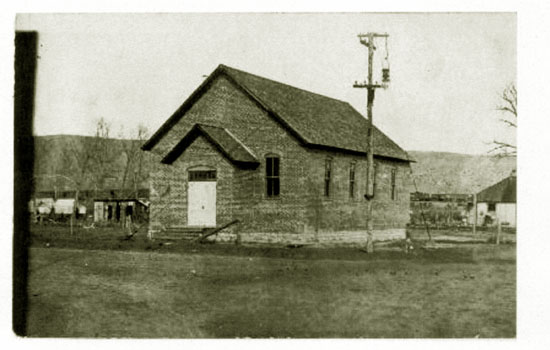
Church, Monarch, Wyo., 1905.
Next page, Acme and Carneyville.
|